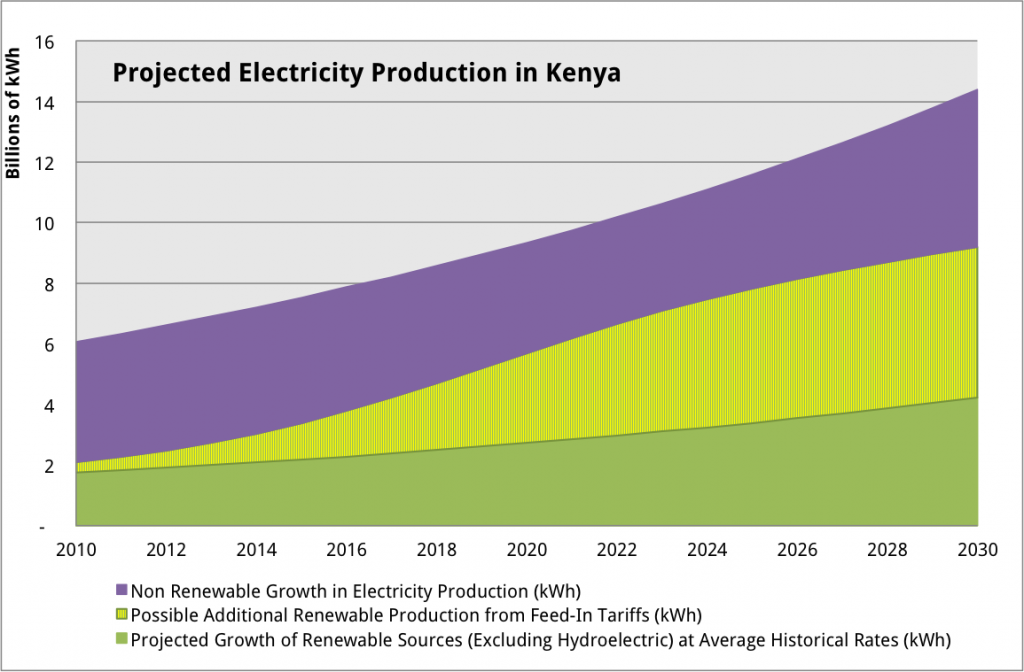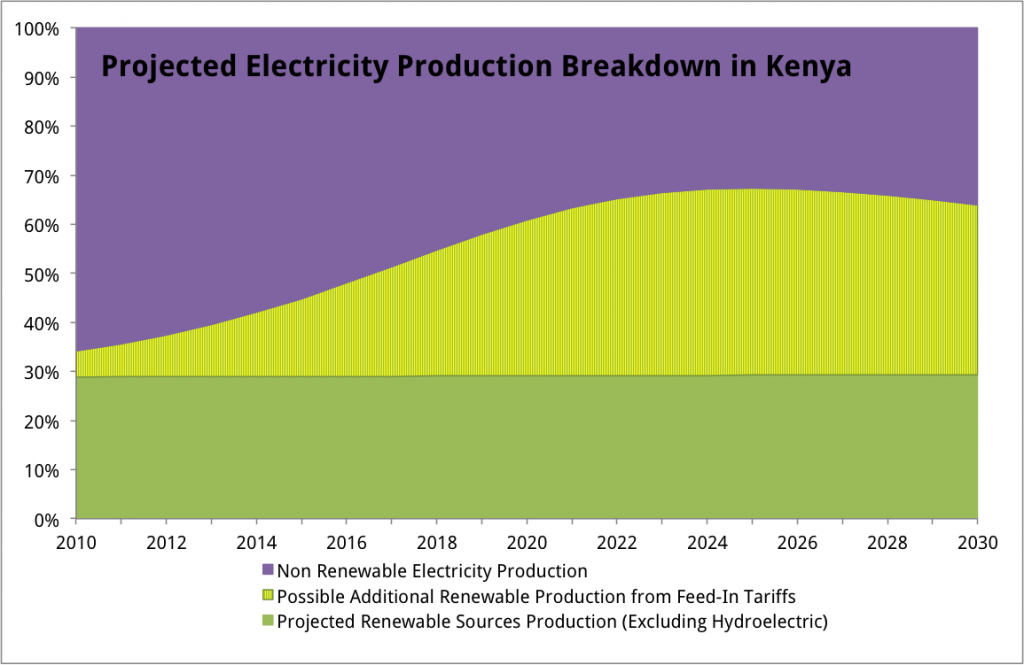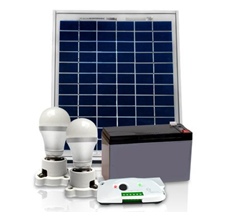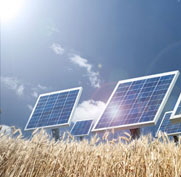|
A feed-in tariff is a policy tool that governments use to increase the renewable energy supply on the grid by stimulating investment. Utility companies responsible for supplying the national grid are required to purchase electricity from renewable energy providers at a predetermined price under a Power Purchase Agreement (PPA). The price is set at a level that is purposely designed to attract and stimulate new investment in the renewable sector. The tariffs apply to grid-connected plants and are valid for a 20-year period from the beginning of the PPA. Kenya’s tariff schedule is below.

Anticipated Effects: Benefits and Growth
The most obvious benefit of the feed-in tariff is the potential for added capacity for renewables. As outlined above, the maximum capacity that the feed-in tariff will subsidize is 1750 MW added over the course of 20 years. According to UNEP, it is reasonable to expect that the feed-in tariffs will stimulate 1300 MW of installed power capacity. Taking into account the diversification of the renewable energy sources and their respective global efficiencies, we estimate that this results in a potential additional 5800 GWh produced over the duration of the tariff.
The first chart below shows projected electricity production in Kenya up to 2030. Historically, overall electricity production has increased on average at 5% per year; this is shown in purple. Production from renewables, excluding hydroelectric – shown in green – has historically increased at 4.5%. The yellow area in the chart below shows the potential additional renewable production that would come as a direct result of feed-in tariff projects. They could almost double renewable energy production.

What’s intriguing is the way that the feed-in tariffs will affect Kenya’s energy mix. We don’t expect that feed-in tariffs will accelerate overall growth, as historically the nation’s energy growth has been consistent due to careful management and diversification of its sources. If the overall energy production continues to grow consistently and an additional 1300 MW of renewable energy capacity is installed as predicted through the feed-in tariff program, energy production from renewable could make up to 60% of national energy supply. This would certainly put Kenya on the forefront of energy development in Africa.

The government’s efforts at creating a comprehensive policy will create many fringe benefits including stimulating investment and reducing the cost of peak electricity. The tariff makes renewable energy generators more attractive to potential investors thanks to the guaranteed 20-year purchase contract (PPA) at a fixed price per kWh. Additionally, feed-in tariffs have historically reduced the price of peak electricity when deployed in other markets. According to Clean Technica, peak energy prices in Germany decreased by 40% and the savings were passed onto consumers. Although this spells lower average revenue per person to the national energy suppliers (there is one state-owned and six independent providers in Kenya), reducing the price is the only way to increase the customer base in emerging markets.
- See more at: http://investeddevelopment.com/blog/2012/09/renewable-energy-in-kenya-policy-tools-and-anticipated-effects/#sthash.TZkd2vFS.dpuf
|





